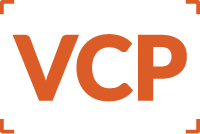Cyanotypes: A Workshop for Beginners
This workshop is designed for photographers with no prior experience in alternative processes – but all are welcome to participate!
The cyanotype, invented in 1842 by Sir John Herschel, is one of the oldest photographic processes. In many ways, cyanotype is an ideal entry into the world of alternative photographic processes. The chemicals needed for cyanotype are inexpensive (i.e. there are no precious metals involved) and the equipment needed is minimal. The process does not require a darkroom; a dimly lit (no fluorescent lights) room will suffice.
Participants will learn to make cyanotypes from either traditional large format, silver negatives which they supply or from digital negatives. In the latter case, participants will send digital files (of black and white photos) to the instructor ahead of time for printing of negatives. Participants will also be able to explore the toning of cyanotypes to give hues other than the basic blue.
Participants should bring pencils (pens and photochemistry are often incompatible) and a notebook of some sort. Keeping good notes in the darkroom is very helpful in learning from one’s mistakes!
The workshop will take place on Sunday, August 7th, 2016 from 9am to 5pm.
Please use the form at the bottom of the page to register.
Class Size:
The workshop will be limited to 6 individuals.
Instructor: Frank Gorga
 Trained as a biochemist and now retired from an academic career, these days Frank Gorga puts the bulk of his creative efforts into his photography.
Trained as a biochemist and now retired from an academic career, these days Frank Gorga puts the bulk of his creative efforts into his photography.
Frank’s interest in photography began around 1970, in high school. The photography course listed in the catalog sounded much more interesting than did “shop class”. Finding an old 4×5 camera in the classroom closet, Frank began photographing the landscape with black and white film and the rest is history as they say.
Frank’s interests in alternative processes began about a dozen years ago when he took a workshop on gum printing. Deciding that the environmental costs of the gum bichromate process were not justifiable, he turned to cyanotype and salt printing. The mix of chemistry and art along with the mix of the modern (digital negatives) and the historic involved in alternative processes continue to charm him.
These days, Frank considers himself both a landscape and a wildlife photographer but he also photographs many other subjects as well. His current work is mostly digital but he occasionally still uses a 4×5 view camera. He and his wife have two grown children and live in a quiet corner of the Monadnock region of southwestern New Hampshire.
You may contact Frank directly with any questions at fgorga@gmail.com or by calling (603)588-2569.
Workshop Schedule
(times and intervals for the various activities are all tentative)
9:00 – 9:30 Coffee / Registration
9:30 – 10:30 Introduction (A Bit of History and Chemistry)
• Iron-based photochemistry from 1849 to present
• Cyanotype materials and light sources
• Safety (UV and chemical)
• Disposal of Waste
10:30 – 11:30 Cyanotype Demonstration
• Preparation of chemicals
• Coating and drying of paper
• Exposure
• Development and toning
11:30 – 4:30 Participants make and optionally tone cyanotypes from their own negatives.
• Lunch as workflow allows
4:30 – 5:00 Wrap-up session
• End of workshop questionnaire /feedback for instructor
• Participants show finished work



